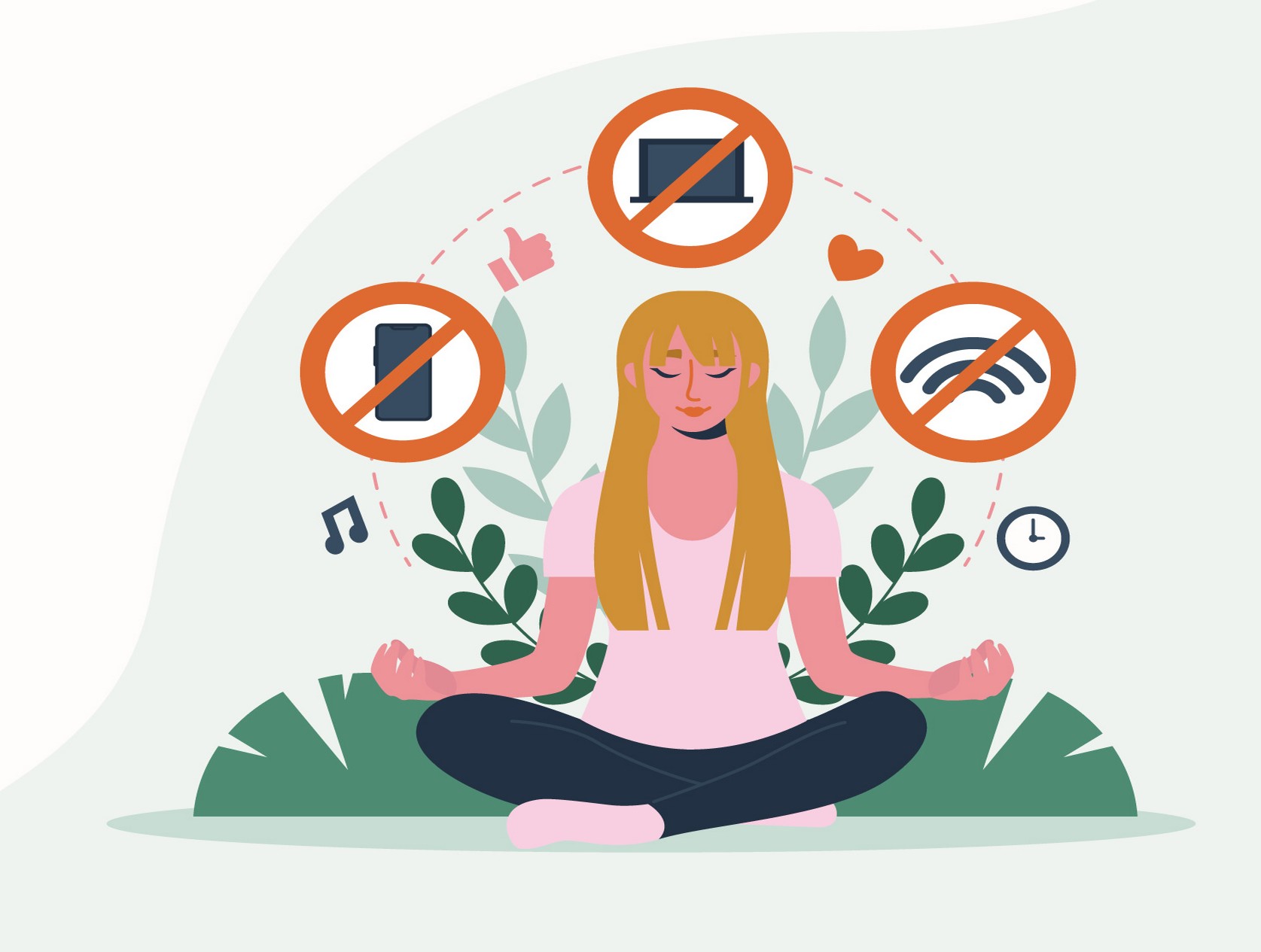
Finding peace can be tough in a world where screens demand constant attention. The rise of digital detox signifies a quest for better tech-life harmony. From immersive virtual experiences to hyper-connectivity, emerging tech offers exciting possibilities. However, this constant influx of digital stimulation has sparked a growing movement: the digital detox.
The digital detox movement emphasises the importance of establishing a healthy relationship with technology. It acknowledges the potential downsides of excessive screen time, such as stress, anxiety, and a decline in focus. This guide explores achieving a harmonious balance between embracing innovation and prioritizing well-being.
We’ll explore practical strategies for using technology mindfully. These strategies can allow you to reap the benefits of emerging tech while safeguarding your mental and physical health. By incorporating these strategies, you can ensure technology empowers you rather than controlling your time and attention.
Read on for a happier, healthier digital life!
What is a Digital Detox? The Essence of Mindful Technology
Digital detox is when you voluntarily abstain from using digital devices like smartphones, computers, and social media platforms. It’s a way to hit pause on the constant connection and focus on the real world. A digital detox aims to improve your well-being by reducing stress, improving focus, and strengthening real-life connections. It can also help you develop a healthier relationship with technology in general.
There’s no one-size-fits-all approach to a digital detox. Some people might completely disconnect for a weekend, while others simply set boundaries around their screen time. The key is to find what works for you. Thinking about going on a digital detox is often referred to as mindful technology, which we will discuss next.
Understanding Mindful Technology Use
Mindful technology use is about being aware and intentional about our digital consumption and understanding its impact on our daily lives. It involves balancing leveraging technology for productivity and connectivity while prioritising mental clarity and well-being.
Defining Mindful Technology Use
Mindful technology use means interacting with our devices and digital platforms in a way that supports our overall well-being. It’s not just about reducing screen time; it’s about creating a more intentional relationship with the tech we use daily. This approach prioritises mental clarity and balance, ensuring that connectivity enhances rather than hinders our lifestyle.
In practice, mindful tech usage involves knowing why, how, and when we engage with technology. It requires setting clear boundaries with gadgets to protect our time for work, rest, and connecting with the real world around us. The aim is to harness innovation positively while maintaining wellness through integrating emerging tech into daily life.
The Impact of Technology on Daily Life
Technology has revolutionised the way we live, work, and connect with others. It has brought convenience to our fingertips, making tasks easier and more efficient. The constant connectivity through smartphones and digital devices has significantly impacted daily life, blurring the boundaries between work and personal time.
Users are constantly bombarded with notifications and updates, decreasing face-to-face interactions and family time. Furthermore, excessive screen time has been linked to increased stress levels and mental health issues among individuals.
The reliance on technology for communication and information access has reshaped human behaviour, influencing how people socialise, learn, shop, entertain themselves, and even form opinions.
Benefits of Mindful Technology Use
Mindful technology use can improve mental health, increase productivity, and enhance focus and creativity in daily life. Finding harmony in innovation requires a mindful approach to tech usage.
Improved Mental Health
Improved mental health is an essential benefit of mindful technology use. Reclaiming balance in a technology-driven world can enhance focus and mental clarity, reducing stress and anxiety.
Engaging in tech-free activities and setting limits on tech usage contribute to effectively managing screen time, promoting better overall well-being. Digital detox is crucial in improving mental health by allowing individuals to reconnect with the real world and find harmony with technology, ultimately enhancing their mental wellness.
Balancing technology usage helps individuals reclaim control over their engagement with digital devices, leading to improved mental health. Recognising the need for a break from constant connectivity provides an opportunity for rejuvenation through digital detox activities.
Increased Productivity
Mindful technology use can significantly boost productivity. By setting boundaries and limits, individuals can carve out dedicated time for focused work without distractions. Engaging in tech-free activities helps rejuvenate the mind, enhance mental clarity and improve efficiency in daily tasks.
Embracing mindfulness in technology usage creates a balance between digital engagement and uninterrupted workflow, ultimately contributing to increased productivity and overall well-being.
Recognising the need for a break from constant digital connectivity is crucial for maintaining optimal performance at work or home. A balanced approach to technology consumption empowers individuals to reclaim focus and achieve better results.
Enhanced Focus and Creativity
Improving focus and creativity is a direct result of mindful technology use. Reclaiming control over tech consumption allows for more clarity in thought, enabling individuals to engage more deeply in tasks.
Taking breaks from digital devices provides the mind with the necessary room for creativity to thrive, fostering innovative thinking and problem-solving skills. By setting boundaries with digital devices, individuals can experience heightened focus during work or leisure activities.
Rejuvenating through digital detox activities helps strengthen mental clarity and enhance overall well-being. Unplugging from technology encourages individuals to engage in other stimulating activities such as reading, exercising, or spending time outdoors.
Practical Steps for Mindful Technology Use
Setting clear boundaries and limits for technology use can help maintain a healthy balance. Engaging in tech-free activities and being mindful of digital content consumption are important steps to achieving harmony with emerging technology.
Setting Boundaries and Limits
To find harmony in the use of emerging technology, setting boundaries and limits is essential. Here are some practical steps for doing so:
- Defining specific times for tech usage to create a healthy balance between screen time and other activities.
- Establish designated tech-free zones within the home or workplace to promote offline interaction and relaxation.
- Utilising digital well-being features on devices to regulate usage and prevent overexposure to screens.
- Prioritising face-to-face communication over virtual interactions to foster meaningful connections.
- Implementing “no-phone” policies during meals or social gatherings to encourage mindful presence.
Taking Control of Devices
Having your digital devices at hand’s reach can increase stress levels, especially if you get constant notifications from social media platforms—reign in those devices by silencing the notifications’ sound and uninstalling applications you frequently use.
- Silence notifications: Constant pings and alerts can be distracting. Turn off unnecessary notifications or silence your phone during certain times.
- Uninstall addictive apps: If particular apps suck you in, consider deleting them temporarily.
- Grayscale mode: Some phones allow you to switch to grayscale, making them less visually stimulating and potentially curbing excessive use.
Engaging in Tech-Free Activities
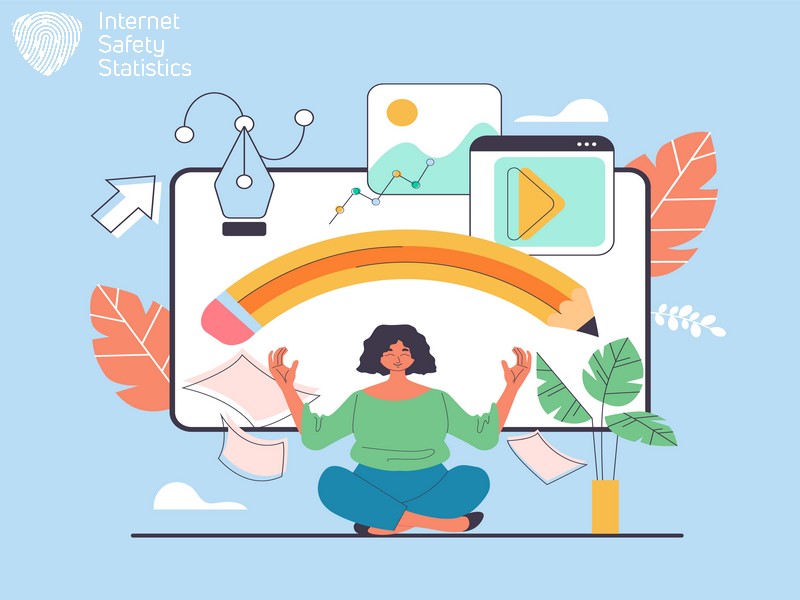
Engaging in tech-free activities is essential to find harmony in the digital age. Here are some practical ways to incorporate tech-free activities into your daily routine:
- Spending quality time outdoors, away from screens, can help rejuvenate and improve mental clarity.
- Engaging in hobbies such as reading, gardening, or crafting promotes a healthy balance between technology use and leisure activities.
- Participating in physical exercises like yoga, hiking, or cycling provides a refreshing break from digital devices while enhancing overall well-being.
- Prioritising face-to-face interactions with family and friends strengthens connections and reduces reliance on virtual communication.
- Allocating time for mindfulness practices such as meditation or deep breathing exercises fosters mental relaxation without digital distractions.
Mindful Consumption of Digital Content
Practising mindful digital content consumption is important in initiating a digital detox. This step will allow you to gradually withdraw from technological use without the backlash of withdrawing too fast from your digital life, ruining the detox process. Here are some helpful tips on beginning mindful consumption of digital content.
- Setting time limits for daily social media use to prevent overexposure.
- Being selective about the online content consumed, focusing on quality over quantity.
- Engaging in activities that promote offline interactions and connections.
- Practising digital mindfulness by being aware of online content’s emotional and mental impact.
- Taking regular breaks from screens to reduce eye strain and mental fatigue.
- Prioritising meaningful digital engagement that aligns with personal values and interests.
Planning and Follow-through
It’s easy to fall back after starting a digital detox, especially since everyday life today requires using our digital devices more often. This raises the importance of planning your detox and keeping track of your progress.
- Set goals: Decide what you hope to achieve with your digital detox. Do you want to improve sleep, focus, or reduce stress?
- Inform others: Let close contacts know you’ll limit your digital availability for a while.
- Reflect and adjust: After your detox period, assess how you feel. Consider if you want to incorporate any practices into your daily life for a healthier digital lifestyle
The Art of Digital Detox: Aiming for a Balanced Life
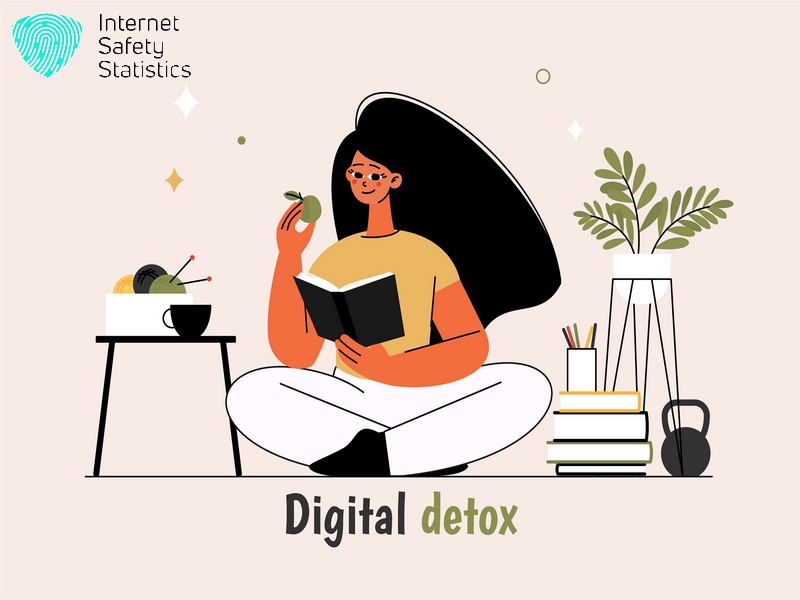
Recognising the need for a break and rejuvenation through digital detox activities is essential for finding harmony in a tech-driven world. Read on to learn more about achieving a balance between technology and well-being.
Recognising the Need for a Break
Realising the constant influx of technology in our lives is vital. Digital detox isn’t just a trend but a necessary tool to regain control over our tech habits. Prioritising moments away from screens and devices can significantly improve mental clarity and overall well-being, allowing for a more balanced approach towards technology use.
Understanding the impact of digital overload encourages us to take regular breaks from the relentless buzz of notifications and emails. By recognising this need for respite, we empower ourselves to find harmony in an increasingly interconnected world.
Rejuvenating through Digital Detox Activities
Recognising the need for a break is the first step towards finding balance. Once this acknowledgement is made, engaging in digital detox activities can provide rejuvenation and reconnection with oneself. Here are some effective ways to achieve this:
- Engage in outdoor activities such as hiking, cycling, or nature walks to immerse in the physical world and disconnect from digital devices.
- Practice mindfulness and meditation to centre the mind and create a sense of calm amidst digital distractions.
- Cultivate hobbies like painting, cooking, or gardening that do not involve screen time, allowing for creative expression and relaxation.
- Schedule regular technology-free periods during the day to give your mind a break from constant connectivity.
- Foster meaningful relationships by spending quality time with family and friends without the interruption of technology.
- Participate in wellness retreats or workshops that promote unplugging and focus on holistic well-being.
- Embrace analogue experiences such as reading physical books, writing letters, or listening to vinyl records to reconnect with simpler pleasures.
Personalising Your Digital Detox: How to Make it Work for You
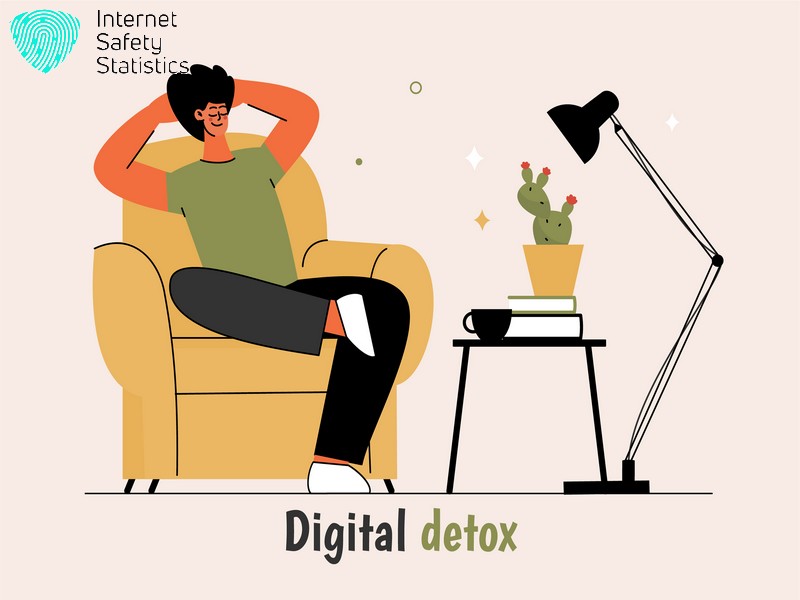
The previous steps are general guidelines to follow for a digital detox. However, every journey is different, and we’ve provided some guiding steps to inspire you in personalising your digital detox experience.
Tailor the Duration
It’s better to start small and build upon the duration of your digital detox. Small but consistent steps will allow you to advance and spend lengthy periods without technology.
- Weekend Warrior: A short detox (24-48 hours) over a weekend can be a great introduction for beginners.
- Digital Vacation: For a more immersive experience, consider a longer detox of a week or more.
- Micro-Detoxes: If a full detox feels overwhelming, try incorporating small daily breaks (e.g., tech-free mornings or evenings).
Focus on Specific Devices or Activities
The following customisation step focuses on truly important matters. Identifying the cause of your stress is two-thirds of the solution. So, knowing which application or service stresses you out is a great point to start.
- Social Media Sabbatical: Feeling overwhelmed by social comparison or negativity? Take a break from specific platforms like Instagram or Facebook.
- Phone Fasting: If your phone is the main culprit, consider a period when you only use it for essential calls and communication.
- App Detox: Identify apps that drain your time or focus and remove them temporarily.
Choose Replacement Activities Based on Your Preferences
Before starting your digital detox, you must determine what to do with your time. This will depend on your interests and save you downtime that might push you back into the grip of technology.
- The Bookworm’s Detox: Replace screen time with curling up with a good book.
- The Nature Lover’s Detox: Disconnect by going for hikes, camping trips, or spending time in your garden.
- The Creative Detox: Channel your energy into creative pursuits like painting, writing, or playing music.
Difficulty Levels
Remember, you can choose how to begin your digital detox from the beginning. You can take it gradually, for fear of relapsing or wanting to focus on important news and applications, or you can turn off all your devices at once and switch off the virtual world.
- Go Cold Turkey: For a complete disconnect, turn off devices entirely and leave them somewhere out of sight.
- Limited Access: Allow yourself controlled access for specific purposes (e.g., checking work emails once a day).
- Mindful Usage: Maintain some device use, but actively choose when and for how long, focusing on essential tasks and communication.
Your digital detox is a personal experience. You must listen to your body to identify the effects of technology consumption on it. To determine its effectiveness, you must do this before, during, and after detox. There’s always room for adjustment; if you feel overwhelmed during your digital detox, there’s nothing wrong with adjusting your approach to ensure the continuity of the experience. You mustn’t get discouraged if you slip up; every effort to achieve a healthier digital life is a win.
Your Digital Detox: Nifty Tips to Enjoy Your Technology-Free Time
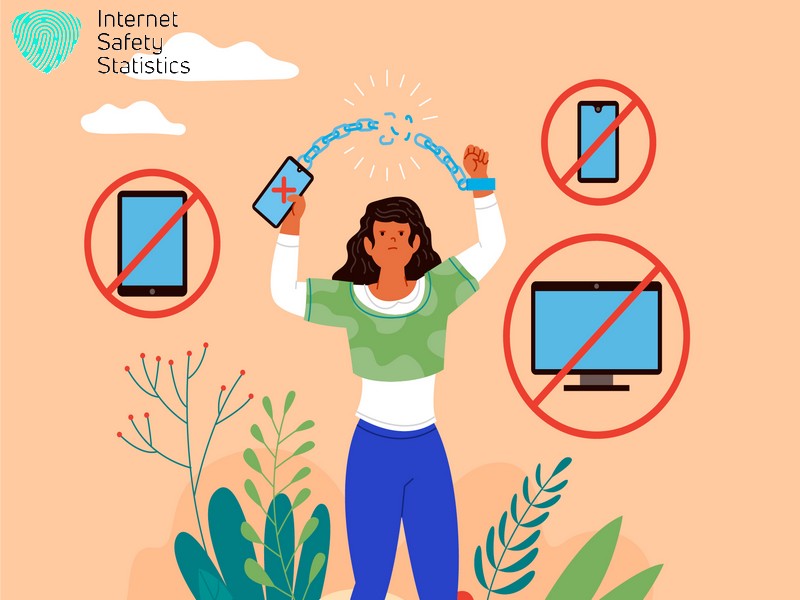
Before we wrap up, there are some great nifty tips to share that will help you personalise your digital detox experience further and make it more enjoyable. A successful digital detox is all about replacing bad habits with good ones. These nifty tricks can help you reclaim control of your time and reconnect with the real world.
- Turn Your Phone into a Dumbphone: Switch your phone to grayscale mode (if available) and remove all non-essential apps. This will make your phone less visually stimulating and reduce the temptation to scroll endlessly.
- Create a Nature Lockbox: Invest in a lockable box and keep your phone and other devices in it when going for walks, reading, or spending time with loved ones.
- Befriend the Do Not Disturb Feature: Use your phone’s “Do Not Disturb” function and customize it for specific times or locations. Silence notifications during meals, work hours, or bedtime for uninterrupted focus.
- Swap Apps for Alarms: Ditch using your phone as an alarm clock. Invest in a dedicated alarm clock and place it away from your bed. This prevents the morning scroll of doom and helps you wake up refreshed.
- Gamify Your Detox: Partner with a friend or family for a digital detox challenge. Track your progress together and reward yourselves for reaching milestones. This adds a fun element and keeps you accountable.
- Turn Waiting into “Me” Time: Instead of reaching for your phone while waiting in line or for appointments, carry a book or doodle pad or practice mindfulness exercises.
Reclaiming balance in a technology-driven world is crucial for well-being. The relationship between emerging technology and digital detox is an ongoing topic of discussion and research. A digital detox can benefit mental health and overall well-being, emphasising the need to balance technology and our lives harmoniously. Embarking on a digital detox journey is key to reclaiming balance in this digital age. It’s all about finding harmony with mindful technology to enhance our well-being.
FAQs
What does finding harmony with digital detox mean?
Finding harmony with digital detox means setting limits with your digital devices to improve focus, mental clarity, and overall well-being.
Can emerging tech help me balance my online and offline life?
Yes! Emerging tech involves platform engineering that can assist you in creating boundaries for a healthy connectivity balance between the digital world and real life.
How does technology mindfulness enhance my well-being?
Practising technology mindfulness helps you use tech thoughtfully, enhancing rather than disrupting your life and boosting your emotional and mental health.
Is it possible to embrace new technologies while still doing a digital detox?
Absolutely! You can enjoy the latest innovations by planning times for a digital detox, encouraging you to take regular breaks from screen time.
